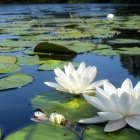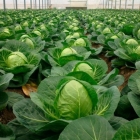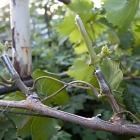I wonder: apartments database - This is an essential tool in the hands of a realtor or man who wishes to buy an apartment, land, etc. Daily updates and only current information, be the first one who learns about favorable selling or lease.
 "Livestones" The people are called some representatives of the vast family of mezhembrianenhem. These plants are supersuccurates, that is, unlike ordinary succulents, which have certain organs - stem, leaves, root - are adapted to accumulate and conserve water, they are one solid tank for fluid, in which unnecessary parts simply disappeared. In fact, most of the "live stones" are two (rarely four or more) inacted thick sheets, from which a small stem and root depart.
"Livestones" The people are called some representatives of the vast family of mezhembrianenhem. These plants are supersuccurates, that is, unlike ordinary succulents, which have certain organs - stem, leaves, root - are adapted to accumulate and conserve water, they are one solid tank for fluid, in which unnecessary parts simply disappeared. In fact, most of the "live stones" are two (rarely four or more) inacted thick sheets, from which a small stem and root depart.
Recently, memembrianizing sucurates began to appear more often on sale. But the flower products are very rarely buying them - a strange lookoff of these small non-zero-walled rages without huge, terry and bright flowers - where to them to roses, lilies and other handsome men! Some still acquire one plant, put it on the windowsill along with Uzambar violets, begonias and geeranians, provide it with due care (abundant watering, nutritious land, a large pot and feeding when landing). The newly acquired "living stone" lives not more than a week, and even that thanks to natural endurance. Why? Yes, because this plant of hot deserts of South Africa and conditions requires relevant places of growth. Flower, distressed by loss of expensive (including financially) Pet, never buy such a plant. So stand "live stones" on the shelves of flower shops, fading and replete with time. But I will reveal one mystery:
— in fact, grow supeccurates very simple!
Granite and pebbles bloom
Most "living stones" the development cycle is the same.
• Spring is the beginning of the growing season.
• Summer is the active growth and development of buds.
End of summer and autumn - flowering, fruiting and preparing for peace.
• Winter - rest period.
• Early spring (Sometimes the end of winter) - molting (yes, "live stones" are leaning, replacing old leaves with new ones).
To the soil is not demanding:
— it should only be loose and permeable for moisture. The volume of the pot minimum - these plants can grow in a vase with a diameter of 10 minutes for years, so that a whole collection can fit on an ordinary window sill in the apartment.
The windowsill - only South or southeast, the abundance of the sun is necessarily. Watering is moderate, and only during growth (spring - the beginning of autumn). Water then when the surface of the plant will shrink a little - this means that he needs moisture, and otherwise it is possible to pour it irretrievably. In the whole winter, only once once - in the most solar day to support formation new leaves. Watering is made exclusively in the pallet - "live stones" do not like when they pour water on the head. Specific requirement - backing up most of the plant with sand or small pebbles - it is necessary so that the sun falls only on the leaves, on which are "windows": after all, in nature, only the tips of the leaves stick out of the sand. For this plant plant a little below the edge of the pot, and the remaining place fall asleep with pebbles.
Another feature of the "stones" - molting, when old leaves replaced new
which remain in place old, while those dry.
These old leaves cannot be removed - in winter they give food and new water. In the summer, dried leaves can be carefully removed.
As you can see, the main thing is to comply with simple conditions, and "living stones" will delight you blossom.
By the way, the flowers are able to predict the eruption of volcanoes. In the risk area, volcanologists recommend landing the King Primulus. Apparently, ultrasound fluctuations accelerate the metabolism in the plant, and it blooms.













 Start a discussion ...
Start a discussion ...